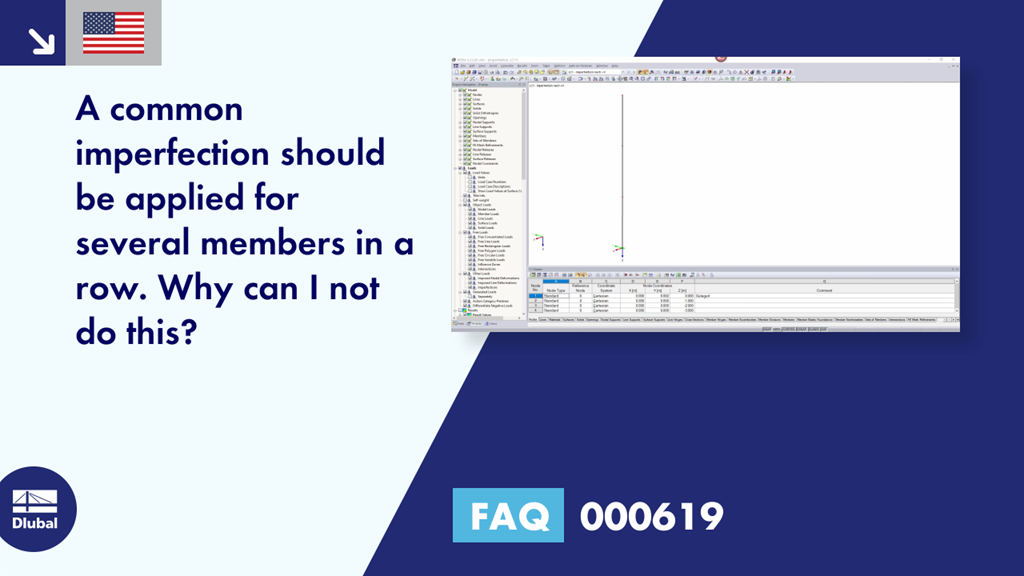Question:
A common imperfection should be applied for several members in a row. Why can I not do this?
Answer:
The reason that a continuous inclination cannot be applied is usually due to the fact that the members differ in their orientation. However, the imperfections are based on the directions of the local member axes.
You can see this clearly if you display the local member axis systems in the Project Navigator.
The problem with the different orientation of the local z-axis is due to the general position of the members. You can see this, for example, in Column "N" in Window 1.7 (RFEM 1.17). If a member is inclined in space, the position of local axes y or z is automatically defined by RFEM/RSTAB. The z-axis lies in space in such a way that the Z-component of the directional arrow always points in the positive global Z-direction in relation to the global coordinate system. The y-axis is then obtained according to the right-hand rule.
The inclined position of the member can usually be explained by a nodal inaccuracy. This is also the case in the attached example, as can be seen from the Y-coordinate of Node 1 (0.002 m instead of 0.000 m).
Furthermore, it is possible to change the tolerance for considering a member as vertical. This setting can be made under "Tools" → "Regenerate Model".
